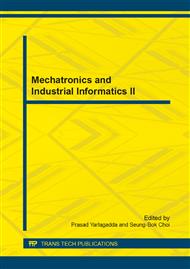p.271
p.276
p.280
p.286
p.292
p.297
p.301
p.305
p.311
Web Page Ranking Algorithm Based on the Meta-Information
Abstract:
PageRank algorithms only consider hyperlink information, without other page information such as page hits frequency, page update time and web page category. Therefore, the algorithms rank a lot of advertising pages and old pages pretty high and can’t meet the users' needs. This paper further studies the page meta-information such as category, page hits frequency and page update time. The Web page with high hits frequency and with smaller age should get a high rank, while the above two factors are more or less dependent on page category. Experimental results show that the algorithm has good results.
Info:
Periodical:
Pages:
292-296
Citation:
Online since:
July 2014
Authors:
Keywords:
Price:
Сopyright:
© 2014 Trans Tech Publications Ltd. All Rights Reserved
Share:
Citation:


